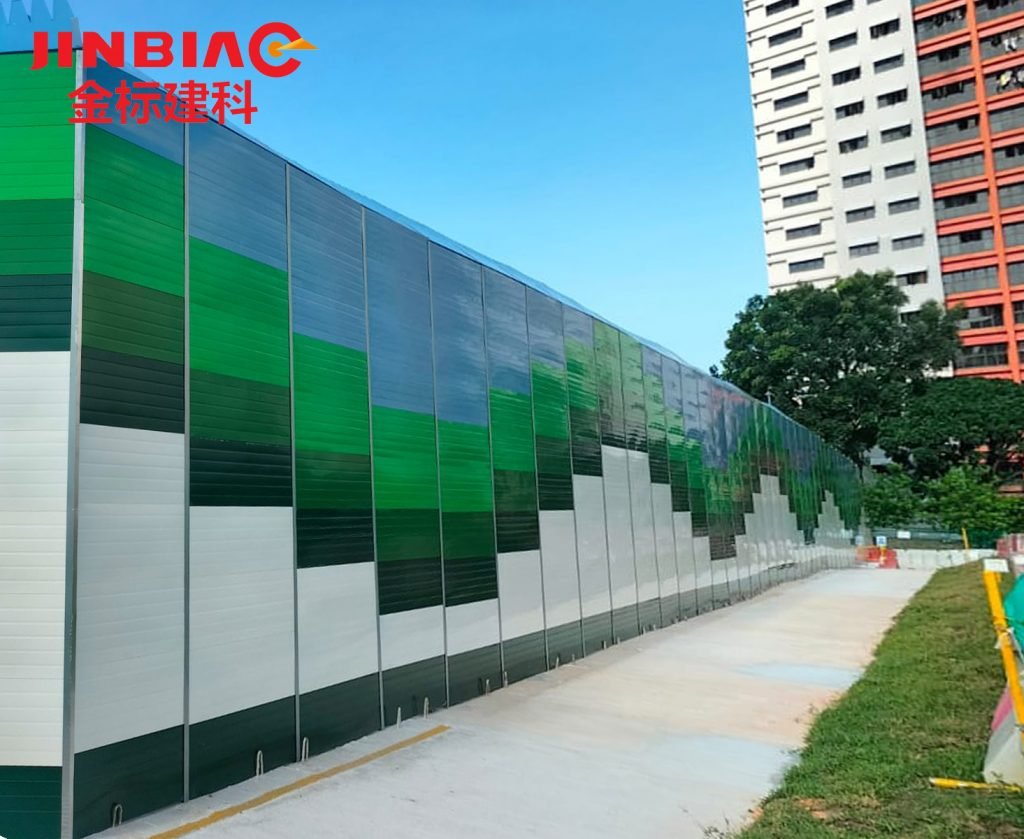
Construction is the backbone of economic growth and urban development, but it comes with a chorus of environmental and safety concerns, with noise pollution being a leading issue. The thud of a pile driver, the hum of heavy machinery, and the clatter of construction materials can not only impact the hearing and safety of on-site workers but also disrupt the peace of the surrounding neighbourhood.
To balance the need for progress with the demand for a quieter, safer environment, the installation of noise barrier solutions is important.
Understanding the Impact of Noise on Construction Sites
Noise is more than a mere nuisance. Excessive and prolonged exposure to construction sounds can lead to stress, hearing damage, and even accidents caused by communication barriers.
Environmental concerns also weigh heavily. Wildlife can be forced to leave their habitats, and residential areas suffer from the constant din, leading to reduced quality of life. Acknowledging these impacts is the first step in ensuring that noise management is at the forefront of every construction project.
Assessing the Need for Noise Barriers
Noise barrier construction solutions require a multifaceted process for selection. Here are several considerations:
- Proximity to Sensitive Areas: How close is the nearest residential or commercial zone? The closer these areas are, the more urgent the need for barriers becomes.
- Scheduled Activities: Project management should align noisy tasks during community-accepted times and install barriers accordingly to mitigate the disturbance.
- Local Regulations: Every city has its own noise regulations. Site managers must be aware of the permitted decibel levels and act accordingly.
The Science of Sound Blocking
Sound propagation is more complex than one might assume. Knowing the principles behind it helps in pinpointing where to set up noise barriers:
- Reflection: Directs sound waves away from sensitive areas.
- Absorption: Converts sound energy into heat, lessening sound levels.
- Defraction: Restricts the inflection of sound, confining it to construction areas.
Crafting a Quiet Zone
Once the science of sound is understood, it’s important to map out where sound barriers would be most effective. The goal is to create quiet zones in the vicinity of loud activities, maintaining a balance between necessity and esthetics.
- Majority Rule: Surveying local residents or business owners can provide valuable input on where they believe barriers should be.
- Site Inspection: Walk the site and assess natural and constructed elements that could either amplify or muffle noise.
Types of Noise Barriers
Noise is not a one-dimensional issue, and neither should its solutions. There are a variety of noise barrier types, each suited for different scenarios:
- Temporary Structures: Mesh fencing can be quickly deployed around specific noisy operations.
- Permanent Walls: Concrete or masonry walls are long-term solutions for consistent noise sources.
- Natural Elements: Earth shaping and planting can serve as passive barriers, absorbing and deflecting sound.
- Materials: High-density, sound-absorbing materials can be used to construct portable or permanent barriers.
Best Practices for Effective Noise Management
Installing barriers is just the beginning of an effective noise management strategy. It should be complemented with the following practices:
- Regular Maintenance: Ensure that equipment and barriers are properly working for maximum noise reduction.
- Scheduling: Plan and communicate with the team when noisy activities are conducted.
- Community Engagement: To maintain trust and transparency, keep locals informed about the project timeline and noise management efforts.
Conclusion
The installation of noise barriers is not just a token effort to appease community members. It’s a serious commitment to health, safety, and harmony by carefully assessing the when and where of barrier placement, incorporating best practices in noise management, and learning from successful examples, construction sites can become better stewards of the environment and beacons of responsible progress.
Hebei Jinbiao is a leading company in Noise Barrier products and Fencing products in Singapore. We guarantee to provide you with the most high-quality Sound Barrier and Fencing products along with our dedicated assistance. Do not hesitate to contact us. We are looking forward to helping you solve your noise issues, safety issues and protecting you from noise pollution as well as ensuring your safety.
